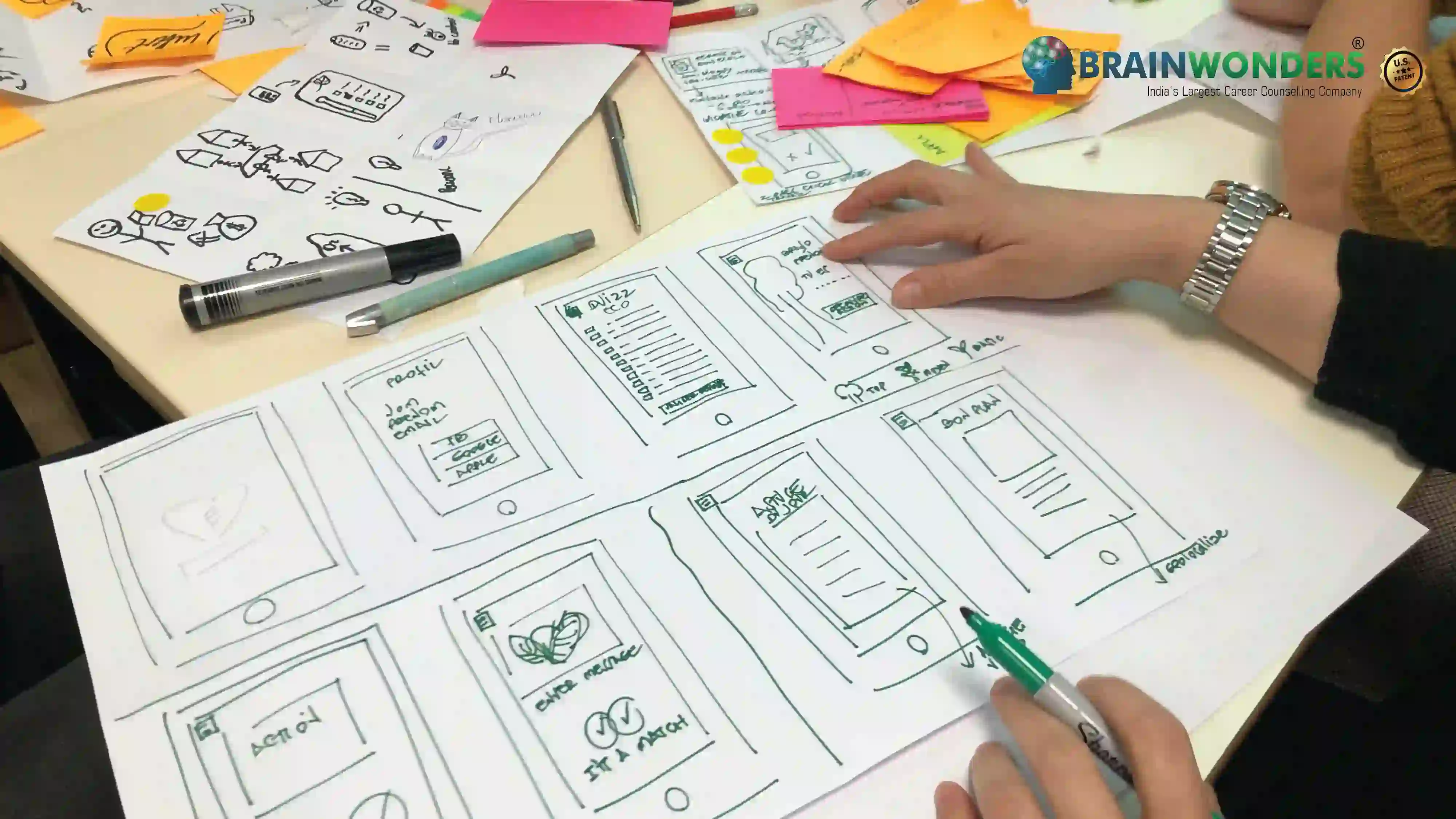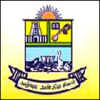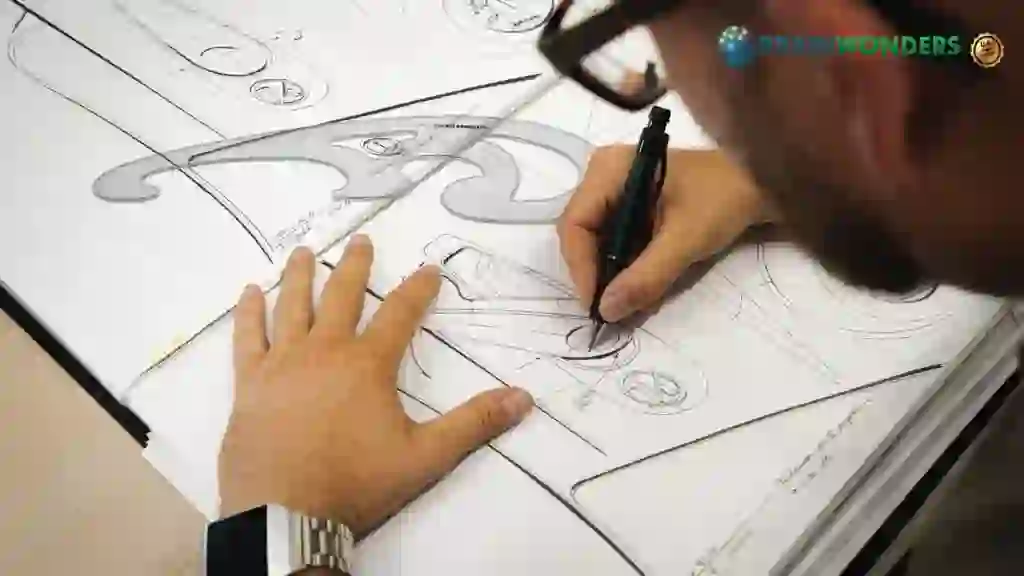How to become an UX Designer
Overview, Courses, Exam, Colleges, Pathways, Salary

Overview
Who is UX Designer ?
User Experience (UX) designer is focused on crafting an excellent user experience that allows the user to get what they want from the product/service in a seamless manner with ease. The term user experience encompasses all elements of the user’s interaction with the product or service, weighing on the conceptual parts of the design process. To highlight the difference between the work of a UI designer and a UX designer is that the UI focuses on the visual elements of the interface, while UX focuses on the positive/negative points about the user’s entire journey through the product. To illustrate the difference better, UI is how the food is presented and how visually appealing the restaurant’s interiors are, whereas UX shall include how the food tastes, the restaurant’s hospitality service. Using UI, UX ultimately crafts the user’s overall experience. UX Designers work on websites, mobile applications, software, and online services as well as for virtual reality (VR) and augmented reality (AR) devices. They are involved in designing new products and features, as well as in upgrading the existing ones to make them more user-friendly. Through their work of meticulously designing the user experience, they act as advocates for the users while ensuring that the business needs with regards to the product/service are being met. Their focus is upon creating an excellent service design that allows for easy and high-quality interaction between the service provider and its consumer.
Typical day at work
What does UX Designer do?
- Undertake user research to create user personas that identify the customer’s specific needs and expectations, assessing how the consumer uses their products
- Analyze and utilize data gathered from the user research to refine and tweak elements for ease of use
- Create prototypes, detailed storyboards, and mockups to communicate the design ideas
- Generate wireframes, sitemaps, customer journey maps, user stories that are optimized for the interface of the product/service
- Design interaction models, user specifications, and prototypes
- Collaborate with creative directors, visual designers, product developers, engineers, and UI designers throughout the product development cycle
- Communicate the design ideas to the business heads to ensure that the brand identity is translated into the final product
- Conduct competitor analysis and identify the current industry trends
- Assess performance metrics to identify and improve existing features of the product/service
Abilities and Aptitude needed
What are the skills, abilities & aptitude needed to become UX Designer?
A successful career as a UX Designer calls for a highly diverse skill set that includes a range of soft skills and specific knowledge. To start with, a UX Designer should have the technical knowledge required for the IT and programming skills needed to carry out their tasks. An artistic eye with sharp observation skills is paramount. A UX designer must also a good business sense and a thorough understanding of the company’s goals, specifically with regards to the product/ service to effectively translate it into a deliverable outcome. Time management and organizational skills are key to function efficiently as a UX designer, in order to deliver quality results while adhering to deadlines. Another important aspect is the knowledge of consumer psychology and excellent critical thinking skills in order to ensure user-centric designs. Communication skills, both verbal and written, shall be required frequently as it is a highly collaborative role, mediating with the team members, the stakeholders, and the clients. Mathematical aptitude and research skills are crucial for the UX Designer to collect pertinent data regarding the user’s experience and further use the data to refine the product for maximum satisfaction and utility.
Salary
Salary for UX Designer?
Minimum Monthly Salary: Entry-level UX designers in India may earn a minimum monthly salary of around INR 25,000 to INR 40,000. These are typically individuals who have recently started their careers in UX design and have some foundational skills and experience.
Maximum Monthly Salary: Experienced and highly skilled UX designers with a strong portfolio and advanced expertise in user research, interaction design, and usability testing may earn anywhere from INR 60,000 to INR 1,50,000 or more monthly. The salary can vary based on factors such as the size and reputation of the company, the complexity of the projects they work on, and their level of responsibility within the design team.
Annual Salary: The annual salary may range from INR 3,00,000 to INR 4,80,000 for entry-level or junior UX designers. As UX designers gain more experience, specialize in specific areas of UX, and take on more challenging projects, their annual income can increase from approximately INR 7,20,000 to INR 18,00,000 or higher.
Highest Paying Jobs and Scope: UX designers who have expertise in designing for emerging technologies, such as virtual reality (VR) and augmented reality (AR), or who focus on specific industries like fintech, healthcare, or e-commerce, may command higher salaries due to their specialized skill set. Additionally, UX designers who demonstrate leadership qualities and take on managerial roles within design teams can expect better salary prospects.
Pathways
How to become an UX Designer?
Entrance Exam
Entrance Exam for UX Designer ?
Courses
Which course I can pursue?
Best Colleges
Which are the best colleges to attend to become an UX Designer?
Industries
Which Industries are open for UX Designer?
UX (User Experience) designers play a vital role in various industries as the focus on creating intuitive and user-friendly digital experiences grows. Here are some industries where UX designers can find opportunities:
- Technology and Software Development: UX designers are in high demand in technology companies, particularly those involved in software development, mobile apps, web design, and digital platforms. These companies recognize user-centered design's importance in creating engaging and user-friendly digital experiences.
- E-commerce and Retail: Online retailers and e-commerce platforms rely on UX designers to optimize their websites and mobile apps for seamless user experiences. UX designers can improve the customer journey, enhance product discovery, and streamline the purchasing process to increase conversions and customer satisfaction.
- Financial Technology (Fintech): Fintech companies that provide digital financial services, such as banking apps, investment platforms, and payment solutions, require UX designers to create intuitive interfaces and smooth user interactions. UX design is crucial in building trust and confidence in financial transactions.
- Media and Entertainment: Media companies, streaming services, and entertainment platforms need UX designers to create engaging and immersive user experiences. Whether it's designing intuitive video streaming interfaces, interactive media applications, or gaming platforms, UX designers contribute to delivering compelling and user-friendly experiences.
- Health Tech and Digital Health: With the rise of digital health solutions, UX designers must create user-friendly interfaces for healthcare applications, telemedicine platforms, wearable devices, and health monitoring tools. UX design in the health tech industry focuses on providing intuitive and accessible experiences for patients and healthcare professionals.
- Education Technology (EdTech): EdTech companies that develop online learning platforms, e-learning tools, and educational apps require UX designers to optimize user experiences for students, teachers, and administrators. UX design can enhance accessibility, interactivity, and engagement in the digital learning environment.
- Travel and Hospitality: Travel booking platforms, hotel reservation systems, and travel-related apps rely on UX designers to create seamless and enjoyable experiences for travelers. UX design in the travel and hospitality industry focuses on simplifying booking processes, providing relevant information, and enhancing the overall travel experience.
- Automotive and Mobility: As the automotive industry increasingly incorporates digital interfaces, infotainment systems, and connected car technologies, UX designers must create intuitive and distraction-free user experiences within vehicles. UX design in the automotive industry aims to improve safety, convenience, and connectivity for drivers and passengers.
- Government and Public Services: Government agencies and public service providers recognize the importance of user-centered design in delivering efficient and accessible digital services. UX designers can contribute to creating user-friendly government websites, mobile apps, and online platforms for citizen engagement and service delivery.
- Startups and Innovation Labs: Startups and innovation labs across various industries are often at the forefront of developing innovative digital products and services. UX designers are crucial in shaping user experiences and driving product success in these dynamic and entrepreneurial environments.
internship
Are there internships available for UX Designer?
Yes, there are internships available for UX designers. Internships provide valuable opportunities for aspiring UX designers to gain practical experience, apply their skills in real-world projects, and build a portfolio. Here are a few sources where you can find UX design internships:
- Companies and Organizations: Many companies, particularly technology companies, and startups, offer internships specifically for UX design. These internships can be found in technology, e-commerce, media, finance, and more industries. Companies may have dedicated internship programs or opportunities posted on their websites or job portals.
- Design Agencies: Design agencies often have internships for aspiring UX designers. Agencies work with various clients and projects, providing interns exposure to various design challenges and the opportunity to work alongside experienced designers.
- Tech Incubators and Innovation Labs: Tech incubators and innovation labs, often associated with universities or entrepreneurial ecosystems, offer internships where UX designers can work on cutting-edge projects and collaborate with startups or research teams.
- Digital and Creative Studios: Digital and creative studios specializing in UX design, user research, or interactive media may have internship programs for UX designers. These studios focus on creating exceptional digital experiences and often have a design-oriented solid culture.
- Academic Institutions: Universities and colleges with design programs may have internship opportunities for their students. These internships may be arranged through cooperative education or internship programs within the institution or through partnerships with industry organizations.
- Online Platforms and Job Boards: Online and job boards focused on design or UX-related fields often have internship listings. Websites such as Behance, Dribble, LinkedIn, Glassdoor, and Indeed can provide internship leads for UX designers.
Career outlook
What does the future look like for UX Designer?
Given the increasing importance being placed on the quality of an organization’s online presence as well as how user-friendly and unique a product’s interface is, having a UX Designer onboard is synonymous with good business. They are also important for businesses to drive customer loyalty through ease of utility. The sharp uptick in the demand for UX Designers is reflected in the competitive salaries they are being offered. It is an office-based job with standard business working hours. UX designers can also find opportunities to work remotely and on a freelance basis, allowing for increased flexibility. While most of these professionals work as full-time employees, they can also find part-time roles. Employment opportunities for UX Designers can be found in financial organizations, software development companies, financial institutions, as well as in educational institutions and public sector organizations. Additionally, in order to sustain oneself in this profession, one must be willing to continually upskill with the latest trends and advancements in technology.






